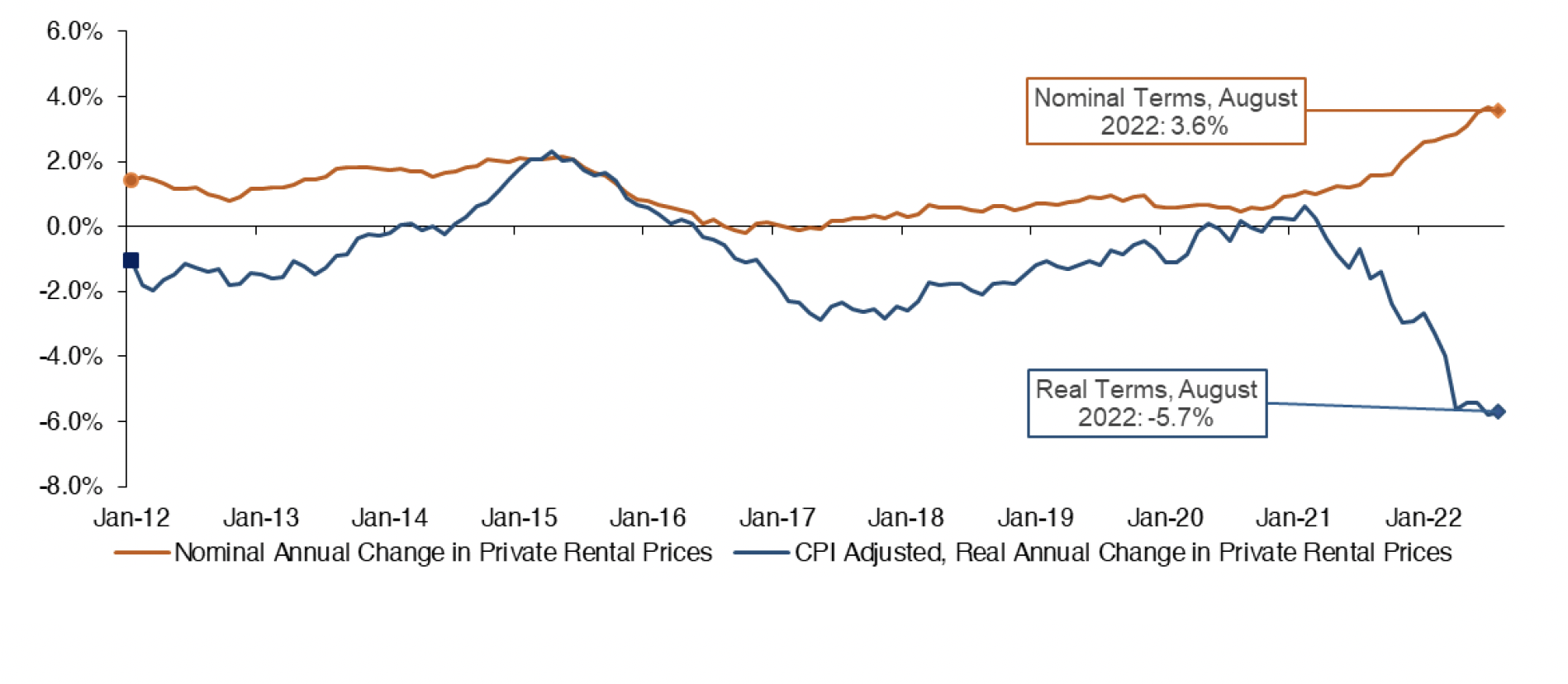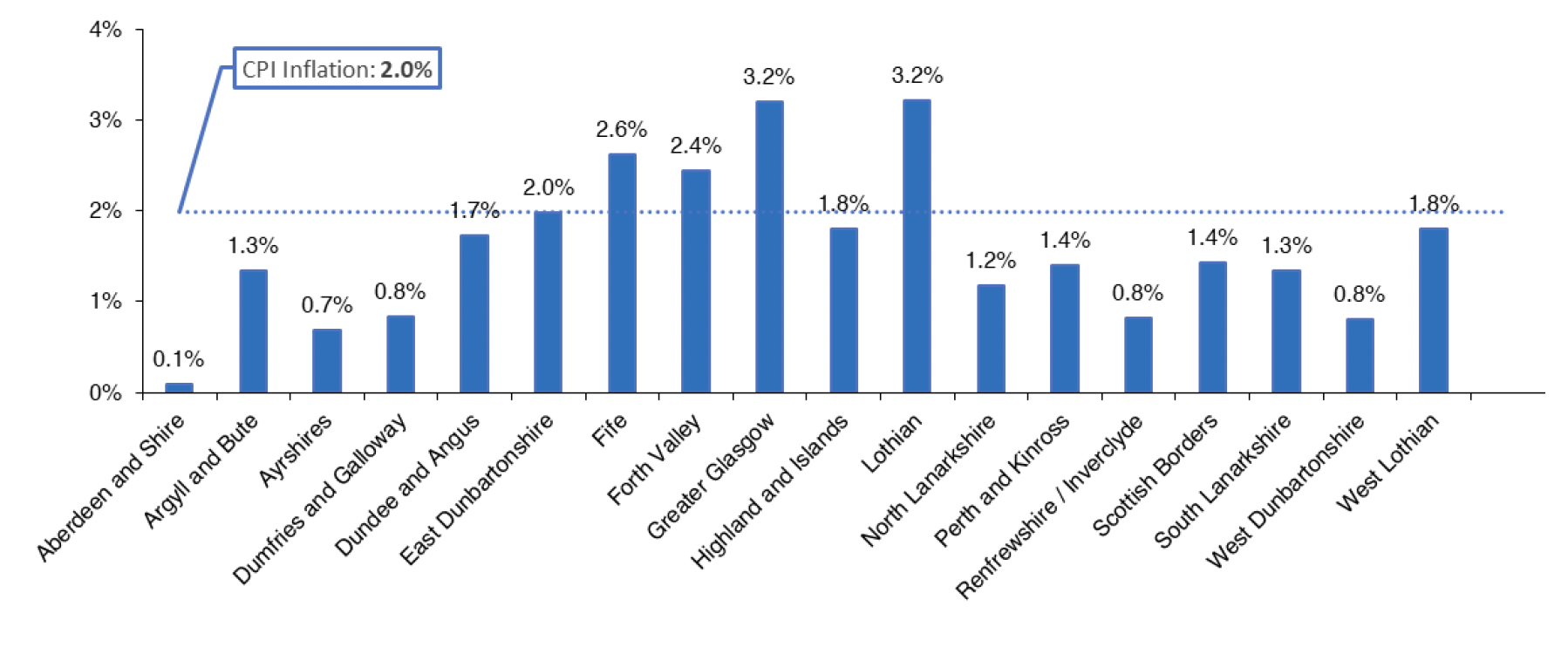Scottish Housing Market Review: Q3 2022
Scottish housing market bulletins collating a range of statistics on house prices, housing market activity, cost and availability of finance and repossessions
This document is part of a collection
4. Private Rental Sector
Private Housing Rental Prices
Private housing rental prices in Scotland increased by 3.6% annually to August 2022. Nominal private rental price growth had been relatively stable since June 2017, ranging between 0% and 2%, with an average of 0.9% to May 2022. However, in recent months nominal rental prices have increased, with the 3.6% annual growth in August 2022 the second highest recorded since the index began, only surpassed by the 3.7% recorded in July 2022.
In real terms (adjusting for inflation, using CPI), the annual change in August 2022 was -5.7%. Chart 4.1 shows that the annual change in real private housing rental prices rose towards positive territory as CPI inflation fell due to the impact of Covid-19, but it has returned to negative territory with the recent spike in CPI inflation, which reached 9.9% in August 2022. The heightened level of CPI inflation can be partly explained by an increase in the price of food and non-alcoholic beverages.

Source: ONS Rental Price Index, Consumer Price Inflation (CPI)
Scottish Government statistics show that from 2010 to 2021 (years to end September), four broad market rental areas ("BRMAs") have seen average rents for 2 bedroom properties increase, on an average annualised basis, above the average level of CPI inflation (2.0%): these are the Lothian (3.2%), Greater Glasgow (3.2%), Fife (2.6%) and the Forth Valley (2.4%) BRMAs. Therefore, the annualised average rate of change was equal to or below that of inflation (CPI) in 14/18 BRMAs, with the lowest annualised rate of change seen in Aberdeen and Shire of just 0.1%.

Source: SG/ONS CPI
* Note: Scottish Government statistics are based almost entirely on advertised rents at point of new let, whilst the ONS methodology makes an allowance for existing lets. In addition, Chart 4.2 looks solely at 2 bedroom properties, whilst Chart 4.1 looks at the entire market.
Rent Freeze and Evictions Moratorium
Tenants will have increased protection from rent increases and evictions during the cost of living crisis under emergency legislation passed by the Scottish Parliament. The Cost of Living (Tenant Protection) Bill gives Ministers temporary power to cap rents for private and social tenants, as well as for student accommodation. The Bill also introduces a moratorium on evictions.
This cap, which applies to in-tenancy rent increases, has initially been set at 0% for rent-increase notices served from 6 September 2022 until 31 March 2023. Ministers have the power to vary the rent cap while it is in force. The measures can be extended over two further six-month periods. Enforcement of eviction actions resulting from the cost crisis are prevented over the same period except in a number of specified circumstances, and damages for unlawful evictions have been increased to a maximum of 36 months' worth of rent.
The temporary legislation balances the protections that are needed for tenants with some safeguards for those landlords who may also be impacted by the cost crisis, who would be able to increase rents if they can demonstrate an increase in certain costs, such as increased mortgage interest payments, capped at a maximum of 3%.
Contact
Email: William.Ellison@gov.scot
There is a problem
Thanks for your feedback